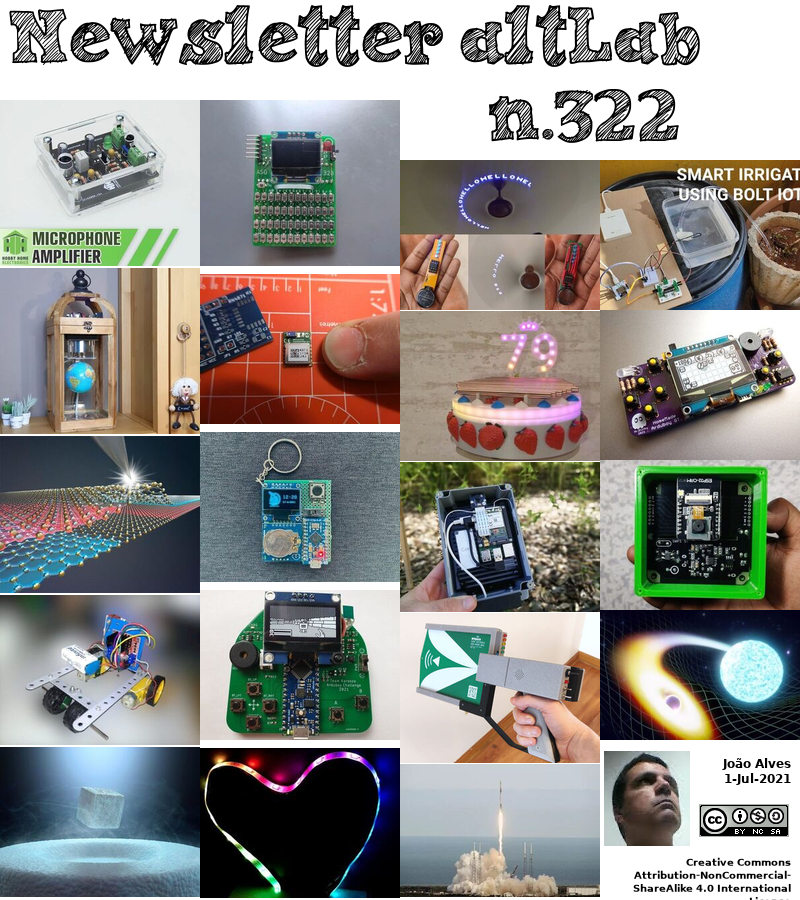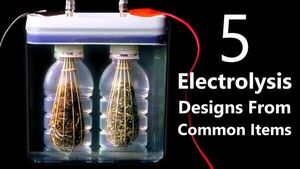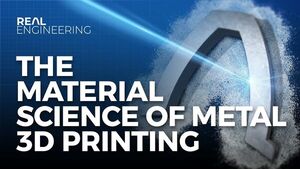2021-07-01 - Nº 322
Editorial
Esta é a Newsletter Nº 322 que se apresenta com o mesmo formato que as anteriores. Se gostar da Newsletter partilhe-a!
Todas as Newsletters encontram-se indexadas no link.
Esta Newsletter tem os seguintes tópicos:
Faz hoje anos que nascia, em 1646, o filósofo e matemático alemão Gottfried Wilhelm Leibniz. Ele foi importante tanto como metafísico como lógico, e também distinguido pela sua invenção independente do cálculo diferencial e integral. Através de encontros com estudiosos como Christiaan Huygens em Paris e com membros da Royal Society, incluindo Robert Boyle, durante duas viagens a Londres em 1673 e 1676, Leibniz foi apresentado aos problemas pendentes que desafiam os matemáticos e físicos da Europa. Ele descobriu independentemente o cálculo diferencial e integral (publicado em 1684), mas envolveu-se numa amarga disputa prioritária com Isaac Newton, cujas ideias sobre o cálculo foram desenvolvidas mais cedo (1665), mas publicadas mais tarde (1687).
Faz também hoje anos que nascia, em 1788, o matemático e engenheiro francês Jean-Victor Poncelet. Ele estudou o pólo e as linhas polares associadas à cónica que levaram ao princípio da dualidade. Em 1822 publicou Traité des propriétés projectives des figures em que apresentou as suas ideias fundamentais de geometria projectiva tais como a relação cruzada, perspectiva, involução e os pontos circulares ao infinito. Como professor de mecânica (1825-35), aplicou a mecânica para melhorar as rodas de água e foi capaz de duplicar a sua eficiência.
Faz igualmente hoje anos que nascia, em 1872, o engenheiro eléctrico inglês William Du Bois Duddell. Ele inventou o oscilógrafo de bobina móvel sensível capaz de registar fotograficamente um ponto de luz que traça as oscilações de uma tensão eléctrica, e outros instrumentos eléctricos. Ele concebeu o que pode ser considerado como o primeiro instrumento musical eléctrico, o Arco Cantante (1899), com base nos sons emitidos por uma lâmpada eléctrica de arco de carbono quando a sua tensão de alimentação era variada. Foi um resultado da sua investigação para resolver o problema dos ruídos indesejáveis de zumbido gerado pela iluminação de rua em arco de carbono. Esta investigação descobriu um princípio associado de resistência negativa. As frequências de áudio foram geradas pela comutação de circuitos ressonantes adequados para o arco.
Faz também hoje anos que nascia, em 1906, o matemático francês Jean Dieudonné. Ele ficou conhecido pelos seus escritos sobre álgebra abstracta, análise funcional, topologia, e a sua teoria dos grupos de Lie. Dieudonné foi um dos dois principais contribuintes para a série de textos Bourbaki. Começou a sua carreira matemática trabalhando na análise de polinómios. Trabalhou numa grande variedade de áreas matemáticas incluindo topologia geral, espaços vectoriais topológicos, geometria algébrica, teoria invariável e os grupos clássicos.
Por fim, faz hoje anos que nascia, em 1956, o bioquímico, geneticista e oncologista americano Gregg L. Semenza. Ele partilhou o Prémio Nobel da Medicina de 2019 com William G. Kaelin Jr. e Peter J. Ratcliffe, pelo seu trabalho sobre como as células se sentem e se adaptam à disponibilidade de oxigénio. Semenza fez a descoberta pioneira do HIF-1 (factor induzível de hipoxia 1), uma proteína, que controla os genes em resposta a mudanças na disponibilidade de oxigénio, e ajusta a quantidade de oxigénio que é recebida pelas células. Esta linha de investigação tem implicações de grande alcance no tratamento de várias doenças, incluindo cancro, ataques cardíacos, anemia e acidentes vasculares cerebrais. Por exemplo, podem ser feitos mais estudos para examinar se as células cancerosas estão à procura de oxigénio quando se espalham pelos tecidos circundantes e pela corrente sanguínea que as transporta pelo corpo.
Faz hoje trinta anos que foi feita a primeira chamada oficial GSM entre o antigo primeiro-ministro finlandês Harri Holkeri e o vice-presidente de Tampere Kaarina Suonio, a 1 de Julho de 1991, durou pouco mais de três minutos. A Nokia desenvolveu durante dois intensos anos a tecnologia que viria a permitir este feito.
O rádio transístor foi uma maravilha tecnológica que colocou a música literalmente nas mãos dos consumidores em meados da década de 1950. Era barato, fiável e portátil, mas nunca conseguia sequer aproximar a qualidade sonora de um disco a ser tocado numa aparelhagem doméstica. Era, no entanto, a única tecnologia disponível para os amantes de música em movimento até que a Sony Corporation desencadeou uma revolução na electrónica pessoal com a introdução do primeiro leitor de cassetes estéreo pessoal. Um aparelho tão espantoso no primeiro encontro como o telemóvel ou câmara digital seria mais tarde, o Sony Walkman foi posto à venda pela primeira vez em 1 de Julho de 1979.
Nesta semana que passou foi lançado o Kernel de Linux 5.13. As principais novidades são o suporte inicial para o Apple M1, suporte preliminar para a placa gráfica integrada no CPU Intel Alder Lake S, suporte para o HDMI adaptativo das GPUs da AMD, um novo driver genérico USB, suporte bastante melhor da arquitectura RISC-V. Tratou-se de um dos maiores lançamentos com cerca de 17 mil alterações.
Também nesta semana que passou a Klein Vision fez uma demonstração das capacidades do seu prototipo do AirCar, um carro voador, fazendo uma viagem de cerca de 35 minutos entre duas cidades da Eslováquia. O veiculo voa a uma velocidade de cruzeiro de 190 km/h e a uma altitude de cerca de 2500 metros. É objectivo da companhia desenvolver um novo prototipo que consiga atingir velocidades de cruzeiro de cerca de 300 km/h e ter uma autonomia de cerca de 1000 quilómetros sem reabastecimentos.
Na Newsletter desta semana apresentamos diversas noticias, artigos científicos, projetos de maker assim como alguns videos interessantes.
 João Alves ([email protected])
João Alves ([email protected])
O conteúdo da Newsletter encontra-se sob a licença  Creative Commons Attribution-NonCommercial-ShareAlike 4.0 International License.
Creative Commons Attribution-NonCommercial-ShareAlike 4.0 International License.
Novidades da Semana

Linux Kernel 5.13 Released with Initial Apple M1 Support, AMD FreeSync HDMI, and More Changes
"After a few months of development, Linux Kernel 5.13 is finally ready for prime time. It brings to the table a plethora of huge improvements, most notably the preliminary support for Apple’s M1 platform. Alongside the support for the M1 chip, we also get a lot of other exciting improvements. Read on to find out more and see the key changes in this release. Linus mentioned it as a fairly big release in the Kernel mailing list: 5.13 overall is actually fairly large. In fact, it’s one of the bigger 5.x releases, with over 16k commits (over 17k if you count merges), from over 2k developers." [...]

The flying car completes first ever inter-city flight
"AirCar, a dual-mode car-aircraft vehicle moved closer to production this week, fulfilling a key development milestone in a 35-minute flight from the international airport in Nitra to the international airport in Bratislava on June 28th, 2021. Klein Vision’s patent protected AirCar completed its 142nd successful landing in Bratislava at 6:05AM. After landing, at a click of a button the aircraft transformed into a sports car in under three minutes and was driven by its inventor, Professor Stefan Klein and co-founder, Anton Zajac to downtown Bratislava, cutting the typical travel time by a factor of two. “Professor Stefan Klein is the world leader in the development of user-friendly Flying Cars.” said Dr. Branko Sarh, Boeing Co. Senior Technical Fellow. “The automated transition from road vehicle into an air vehicle and vice versa, deploying/retracting wings and tail is not only the result of pioneering enthusiasm, innovative spirit and courage; it is an outcome of excellent engineering and professional knowledge,” he added. The AirCar Prototype 1 is equipped with a 160HP BMW engine with fixed-propeller and a ballistic parachute." [...]
Outras Notícias

Virgin Orbit launches 7 satellites on third-ever space mission
"Virgin Orbit now has two successful launches under its belt. The company lofted seven satellites today (June 30), taking a big step toward regular and reliable commercial launch service. Virgin Orbit's carrier plane, a modified Boeing 747 called Cosmic Girl, took off from California's Mojave Air and Space Port today around 9:50 a.m. EDT (1350 GMT; 6:50 a.m. local time) with the two-stage LauncherOne rocket under its wing. At 10:47 a.m. EDT (1447 GMT; 7:47 a.m. local California time), Cosmic Girl dropped LauncherOne over the designated launch zone — a patch of the Pacific Ocean near the Channel Islands — and the rocket roared to life, carrying the spacecraft into the final frontier. Nearly two hours later, Virgin Orbit confirmed that all seven payloads had been deployed as planned into their target orbits. Virgin Orbit, part of Richard Branson's Virgin Group of companies, called today's mission "Tubular Bells: Part One."" [...]
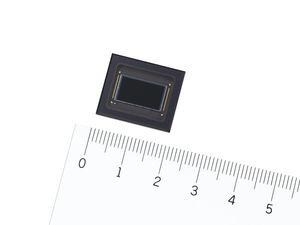
Sony to Release 1/1.2-type 4K-Resolution CMOS Image Sensor for Security Cameras with Approximately 8 times the Dynamic Range of Conventional Model in a Single Exposure
"Sony Semiconductor Solutions Corporation today announced the upcoming release of IMX585, a 1/1.2-type 4K-resolution CMOS image sensor for security cameras, which delivers approximately 8 times the dynamic range of conventional model*1 in a single exposure. The new product uses Sony’s proprietary “STARVIS™ 2” technology, which delivers high sensitivity and high dynamic range (HDR) using back-illuminated pixel technology specially designed for security cameras, resulting in an 88 dB dynamic range, approximately 8 times that of conventional 1/1.2-type 4K-resolution image sensor in a single exposure. It also increases the sensitivity in the near infrared range by approximately 1.7 times compared to conventional model. The new sensor ensures high-quality image capture regardless of the environment or time of day. This, when integrated with the AI image processing in its camera system, delivers high-precision recognition, thereby contributing to a safer, more secure society. " [...]

Deep Space Atomic Clock Moves Toward Increased Spacecraft Autonomy
"Designed to improve navigation for robotic explorers and the operation of GPS satellites, the technology demonstration reports a significant milestone. Spacecraft that venture beyond our Moon rely on communication with ground stations on Earth to figure out where they are and where they’re going. NASA’s Deep Space Atomic Clock is working toward giving those far-flung explorers more autonomy when navigating. In a new paper published today in the journal Nature, the mission reports progress in their work to improve the ability of space-based atomic clocks to measure time consistently over long periods. Known as stability, this feature also impacts the operation of GPS satellites that help people navigate on Earth, so this work also has the potential to increase the autonomy of next-generation GPS spacecraft. To calculate the trajectory of a distant spacecraft, engineers send signals from the spacecraft to Earth and back." [...]
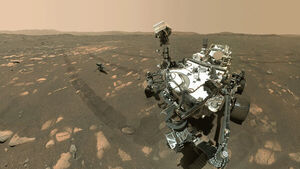
Watch (and Hear) How NASA's Perseverance Rover Took Its First Selfie
"Ever wondered how Mars rovers take a selfie? Color video from NASA’s Perseverance shows how the rover captured the historic April 6, 2021, image of itself beside the Ingenuity Mars Helicopter. As a bonus, the rover’s entry, descent, and landing microphone captured the sound of the arm’s motors whirring during the process. Selfies allow engineers to check wear and tear on the rover. But they also inspire a new generation of space enthusiasts: Many rover team members can cite a favorite image that sparked their interest in NASA. “I got into this because I saw a picture from Sojourner, NASA’s first Mars rover,” said Vandi Verma, Perseverance’s chief engineer for robotic operations at NASA’s Jet Propulsion Laboratory in Southern California." [...]
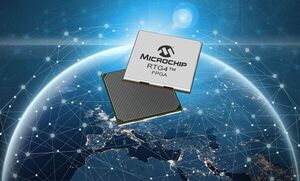
Microchip is First to Achieve JEDEC Qualification for a Radiation-Tolerant (RT) FPGA in a Plastic Package
"Low-power RTG4 FPGA offers new space system designers the industry’s highest reliability at lowest cost with shortest lead times Developers of small-satellite constellations and other systems used in New Space missions must deliver both high reliability and radiation protection while meeting stringent cost and scheduling requirements. Microchip Technology Inc. (Nasdaq: MCHP) has now given them a faster, more economical production path with the first Radiation Tolerant (RT) FPGA that offers the low cost of a JEDEC-qualified plastic package plus the proven reliability of RTG4™ FPGA technology and decades of spaceflight heritage so they do not need to be screened to full Qualified Manufacturers List (QML) procedures. “This is a major milestone for system designers who need large volumes of space-grade components at low unit cost and reduced lead times so they can keep pace with shorter service launch cycles,” said Ken O’Neill, associate director, space and aviation marketing for Microchip’s FPGA business unit. “These RTG4 FPGAs have very high standards for reliability and radiation protection, while keeping the cost down using plastic packages and Sub-QML screening.” Microchip’s RTG4 Sub-QML FPGA has been qualified to JEDEC standards in a flip-chip 1657 ball grid array (BGA) plastic package, with 1.0 mm ball pitch. It is pin compatible with the company’s QML Class V-qualified RTG4 FPGAs in ceramic packages, making it easy for developers to migrate their designs between New Space and more rigorous Class-1 missions. The RTG4 Sub-QML FPGAs in plastic packages are also available as prototypes in small quantities, allowing designers to evaluate the product and prototype their systems before committing to large volumes of flight models." [...]

Arm-powered Fugaku supercomputer claims #1 spot on Top500 third time in a row
"Fugaku, the supercomputer developed jointly by RIKEN and Fujitsu, and powered by Arm technology, has claimed the top spot on the Top500 list for the third time in a row. This achievement further highlights Arm’s unique ability to address the complex compute requirements of the high-performance computing (HPC) space with unparalleled power efficiency, performance, and scalability. The Arm HPC ecosystem has seen rapid growth with more adoption of Arm-based solutions. A number of partners have announced plans to leverage the recently launched Neoverse V1 platform for exascale and HPC projects including Ministry of Electronics and Information Technology (MeitY), SiPearl and Electronics and Telecommunications Research Institute (ETRI). Over the last decade, Arm has driven the best performance-per-watt everywhere computing happens and will continue to do so with its latest Armv9 architecture. As the revolution in HPC is taking shape, Arm remains at the forefront of delivering the performance and efficiency necessary to meet the increasing demand for more specialized processing." [...]

NXP Brings GaN to 5G Multi-Chip Modules for Energy-Efficient Mobile Networks
"NXP Semiconductors N.V. (NASDAQ: NXPI) today announced a major industry milestone for 5G energy efficiency with the integration of Gallium Nitride (GaN) technology to its multi-chip module platform. Building on the company’s investment in its GaN fab in Arizona, the most advanced fab dedicated to RF power amplifiers in the United States, NXP is the first to announce RF solutions for 5G massive MIMO that combine the high efficiency of GaN with the compactness of multi-chip modules. Reducing energy consumption is a major goal for telecom infrastructure, where every point of efficiency counts. The use of GaN in multi-chip modules increases lineup efficiency to 52% at 2.6 GHz—8 percentage points higher than the company’s previous module generation. And NXP has further improved performance with a proprietary combination of LDMOS and GaN in a single device, delivering 400 MHz of instantaneous bandwidth that makes it possible to design wideband radios with a single power amplifier. This energy efficiency and wideband performance are now available in the small footprint of NXP’s 5G multi-chip modules." [...]

STMicroelectronics Reveals Highly Integrated and Flexible Automotive LED Driver
"STMicroelectronics’ ALED6000 single-chip automotive LED driver with integrated DC/DC converter is a low-BoM (Bill of Materials) solution that allows design flexibility and keeps the lighting intensity consistent as electrical conditions within the vehicle fluctuate. Suitable for exterior lighting such as daytime running lights, headlights, rear lights, stop lights, and turn signals, as well as interior lighting, the ALED6000 drives a single string of LEDs at up to 3A and has a wide input-voltage range of 4.5V to 61V. The ALED6000 implements digital dimming and has a dedicated pin to apply the PWM control signal. There is also an Enable pin and a Sync pin that ensures low noise in multi-device applications. The output current is accurate within 3.2% and is monitored efficiently with a sense resistor that has a typical voltage drop of 250mV. The quiescent current is extremely low, at just 2.4mA in operation and 11µA in shutdown." [...]
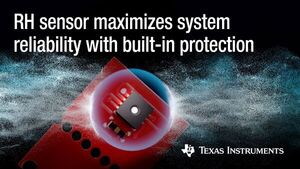
New TI humidity sensors provide the highest reliability and built-in resistance to contaminants and harsh environments
"Engineers can optimize system efficiency and extend industrial and automotive system lifetimes with the industry's highest-accuracy and lowest-power humidity sensors Texas Instruments (TI) (Nasdaq: TXN) today introduced the first devices in a new family of humidity sensors that provide the industry’s highest reliability and accuracy and the lowest power consumption – along with built-in protection of sensing elements. The HDC3020 and HDC3020-Q1 will allow engineers to create more reliable industrial and automotive systems that withstand potential damage caused by moisture, and react as needed to changing water vapor conditions over time. For more information, see www.ti.com/hdc3020-pr and www.ti.com/hdc3020-q1-pr. Moisture affects system performance and product longevity of applications in vehicles, appliances and medical equipment. From extending the life of produce during transport and storage, to keeping automotive cameras clear of fog, to controlling air quality and flow in buildings, the need for improved reliability and safer, more comfortable environments has increased the adoption of relative humidity (RH) sensors. Offering improved relative humidity measurement accuracy with reduced long-term error, when compared to existing RH sensors, the HDC3020 and HDC3020-Q1 preserve data integrity under stress conditions and are the industry’s first to provide integrated correction to adapt to drift caused by natural aging, environmental stress or interactions with contaminants." [...]

First You See It, Then You Don’t: Scientists Closer to Explaining Mars Methane Mystery
"Reports of methane detections at Mars have captivated scientists and non-scientists alike. On Earth, a significant amount of methane is produced by microbes that help most livestock digest plants. This digestion process ends with livestock exhaling or burping the gas into the air. While there are no cattle, sheep, or goats on Mars, finding methane there is exciting because it may imply that microbes were, or are, living on the Red Planet. Methane could have nothing to do with microbes or any other biology, however; geological processes that involve the interaction of rocks, water, and heat can also produce it. Before identifying the sources of methane on Mars, scientists must settle a question that’s been gnawing at them: Why do some instruments detect the gas while others don’t?" [...]

Russia Launches Cargo Ship to Space Station
"Russia on Wednesday successfully launched an unmanned space freighter carrying supplies to the International Space Station from the Baikonur cosmodrome in Kazakhstan. The Soyuz rocket carrying the Progress spacecraft launched at 02:27 am Moscow time (2327 GMT) from the Kazakh steppes and reached its target orbit, the Roscosmos space agency said in a statement. Docking with the ISS is scheduled to take place at 0402 am Moscow time (0102 GMT) Friday and will be automatic. The Progress MS-17 is carrying over 470 kilograms of fuel, 420 liters of water and various other supplies. " [...]
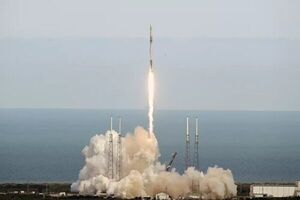
Kuwait launches its first 1-kg satellite into space
"Kuwait has launched the first artificial Earth satellite it has created, a one-kilogram nanosatellite, founder and CEO of the Kuwait-based Orbital Space company, Bassam Alfeeli, told the Kuwait News Agency (KUNA), APA reports citing Sputnik. "The launch of Kuwait's first artificial satellite, Kamar Al Kuwait into space was carried out on a Falcon 9 launch vehicle from the launch site at Cape Canaveral," Alfeeli said. 16 killed in Houthi ballistic missile attack on Yemen's Marib Asia-Pacific stocks mixed as China’s industrial profit growth slows 4.6-magnitude earthquake hits Iran "The satellite launched by Kuwait is considered an educational satellite with micro- or nanometric dimensions. This type of satellite is also known as the cube satellite or CubeSat. It has a volume of ten cubic centimeters and a weight of one kilogram," the founder of the Arab world's first nanosatellites launch company said. " [...]

China’s Zhurong rover returns landing footage and sounds from Mars
"China has released landing process footage from its Zhurong rover as well as video and sounds of the vehicle roving on Mars. Footage of the entry, descent and landing shows deployment of a supersonic disk-gap-band parachute, separation of the backshell, followed by powered descent, a hazard-avoidance hover phase, and landing. The China National Space Administration (CNSA) published the footage in a Zhurong mission update early Sunday Beijing time. Video of the descent of the Zhurong rover from its landing platform, including sounds made by the vehicle’s egress, was included in the release. The sounds were created by the metal on metal interaction of a rack and pinion system and recorded by Zhurong’s climate station, which intends to capture sounds of Martian winds. “With the files we released this time, including those sounds recorded when our Mars rover left the lander, we are able to conduct in-depth analysis to the environment and condition of Mars, for example, the density of the atmosphere on the Mars,” Liu Jizhong, deputy commander of China’s first Mars exploration program, told Chinese media." [...]

NASA’s Self-Driving Perseverance Mars Rover ‘Takes the Wheel’
"The agency’s newest rover is trekking across the Martian landscape using a newly enhanced auto-navigation system. NASA’s newest six-wheeled robot on Mars, the Perseverance rover, is beginning an epic journey across a crater floor seeking signs of ancient life. That means the rover team is deeply engaged with planning navigation routes, drafting instructions to be beamed up, even donning special 3D glasses to help map their course. But increasingly, the rover will take charge of the drive by itself, using a powerful auto-navigation system. Called AutoNav, this enhanced system makes 3D maps of the terrain ahead, identifies hazards, and plans a route around any obstacles without additional direction from controllers back on Earth. “We have a capability called ‘thinking while driving,’” said Vandi Verma, a senior engineer, rover planner, and driver at NASA’s Jet Propulsion Laboratory in Southern California." [...]

SpaceX launches second dedicated rideshare mission
"SpaceX launched 88 satellites on a Falcon 9 June 30 on the company’s second dedicated smallsat rideshare mission. The Falcon 9 lifted off from Space Launch Complex 40 at Cape Canaveral Space Force Station at 3:31 p.m. Eastern, more than halfway into a nearly hourlong launch window because of weather. A launch attempt the day before was scrubbed when a private helicopter entered restricted airspace minutes before the scheduled liftoff. Deployment of the payload of 88 satellites started nearly 58 minutes after liftoff, once the upper stage performed a second burn of its engine to place it into a sun-synchronous orbit at an altitude of nearly 550 kilometers. The satellites, from a variety of government and commercial customers, were released over half an hour. The mission, named Transporter-2 by SpaceX, was the company’s second dedicated smallsat rideshare mission, after the Transporter-1 mission in January." [...]
Ciência e Tecnologia
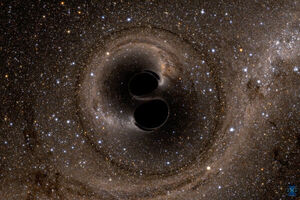
Physicists observationally confirm Hawking’s black hole theorem for the first time
"Study offers evidence, based on gravitational waves, to show that the total area of a black hole’s event horizon can never decrease. There are certain rules that even the most extreme objects in the universe must obey. A central law for black holes predicts that the area of their event horizons — the boundary beyond which nothing can ever escape — should never shrink. This law is Hawking’s area theorem, named after physicist Stephen Hawking, who derived the theorem in 1971. Fifty years later, physicists at MIT and elsewhere have now confirmed Hawking’s area theorem for the first time, using observations of gravitational waves. Their results appear today in Physical Review Letters." [...]

Longer-Lived Lithium-Metal Battery Marks Step Forward for Electric Vehicles
"PNNL scientists find solution to the sudden death common to the batteries Researchers have increased the lifetime of a promising electric vehicle battery to a record level, an important step toward the goal of lighter, less expensive and long-lasting batteries for future electric vehicles. The work is reported June 28 in the journal Nature Energy. Such batteries—the goal of research groups the world over—are seen as an important part of the solution to reduce the effects of climate change, and scientists are exploring a dizzying array of options. One solution on the horizon is a lithium-metal battery for electric vehicles. These batteries hold almost twice the energy of their widely used lithium-ion counterparts, and they’re lighter. That combination offers the enticing prospect of an electric vehicle that would be lighter and go much farther on a single charge." [...]
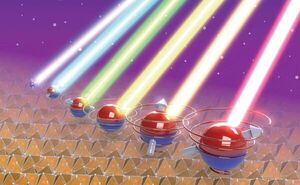
Scientists obtain magnetic nanopowder for 6G technology
"Material scientists have developed a fast method for producing epsilon iron oxide and demonstrated its promise for next-generation communications devices. Its outstanding magnetic properties make it one of the most coveted materials, such as for the upcoming 6G generation of communication devices and for durable magnetic recording. The work was published in the Journal of Materials Chemistry C, a journal of the Royal Society of Chemistry. Iron oxide (III) is one of the most widespread oxides on Earth. It is mostly found as the mineral hematite (or alpha iron oxide, α-Fe2O3). Another stable and common modification is maghemite (or gamma modification, γ-Fe2O3)." [...]

Making Our Computers More Secure
"Columbia Engineering researchers design new techniques to bolster memory safety; ideas are now being used by Air Force Research Lab Because corporations and governments rely on computers and the internet to run everything from the electric grid, healthcare, and water systems, computer security is extremely important to all of us. It is increasingly being breached: Numerous security hacks just this past month include the Colonial Pipeline security breach and the JBS Foods ransomware attacks where hackers took over the organization’s computer systems and demanded payment to unlock and release it back to the owners. The White House is strongly urging companies to take ransomware threats seriously and update their systems to protect themselves. Yet these attacks continue to threaten all of us on an almost daily basis. Columbia Engineering researchers who are leading experts in computer security recently presented two major papers that make computer systems more secure at the International Symposium on Computer Architecture (ISCA), the premier forum for new ideas and research results in computer architecture. This new research, which has zero to little effect on system performance, is already being used to create a processor for the Air Force Research Lab." [...]

A new chapter for space sustainability
"MIT researchers are co-leading the design of a global Space Sustainability Rating system that will soon be operational. Each day, new and innovative space technologies are being developed in countries around the world, and with that, a steady stream of satellites, rockets, cargo ships, and crew vehicles are being launched into the Earth's orbit and beyond. So what happens to these systems when they come to the end of their functional life, or malfunction and break? Some are programmed to re-enter the Earth's atmosphere where, if all goes well, they incinerate safely upon entry. Some are programmed to use their last bit of fuel to launch further into outer space, into so-called graveyard or disposal orbits. Other chunks of space debris are left to float in Earth's orbit, and as a result, estimates indicate that millions of pieces of space junk circulate our planet, traveling at tens of thousands of miles per hour." [...]
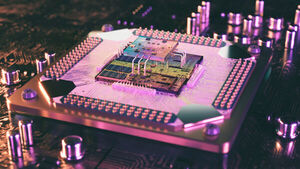
Scientists Discover New Type of Quasiparticle
"Russian scientists have experimentally proved the existence of a new type of quasiparticle — previously unknown excitations of coupled pairs of photons in qubit chains. This discovery could be a step towards disorder-robust quantum metamaterials. The study was published in Physical Review B. Superconducting qubits are a leading qubit modality today that is currently being pursued by industry and academia for quantum computing applications. However, the performance of quantum computers is largely affected by decoherence that contributes to a qubits extremely short lifespan and causes computational errors. Another major challenge is low controllability of large qubit arrays. Metamaterial quantum simulators provide an alternative approach to quantum computing, as they do not require a large amount of control electronics." [...]

This Crystal Impurity Is Sheer Perfection
"Scientists at Berkeley Lab, UC Berkeley design 3D-grown material that could speed up production of new technologies for smart buildings and robotics Crystallization is one of the most fundamental processes found in nature – and it’s what gives minerals, gems, metals, and even proteins their structure. In the past couple of decades, scientists have tried to uncover how natural crystals self-assemble and grow – and their pioneering work has led to some exciting new technologies – from the quantum dots behind colorful QLED TV displays, to peptoids, a protein-mimic that has inspired dozens of biotech breakthroughs. Now, a research team led by scientists at the Department of Energy’s Lawrence Berkeley National Laboratory (Berkeley Lab) and UC Berkeley has developed a nanoparticle composite that grows into 3D crystals. The scientists say that the new material – which they call a 3D PGNP (polymer-grafted nanoparticle) crystal in their recently published Nature Communications study – could lead to new technologies that are 3D-grown rather than 3D-printed. “We’ve demonstrated a new lever to turn, so to speak, to grow a crystalline material into a composite or structured material for applications ranging from nanoscale photonics for smart buildings to actuators for robotics,” said Ting Xu, senior author of the study. Xu is a faculty senior scientist in Berkeley Lab’s Materials Sciences Division and professor of chemistry and materials science and engineering at UC Berkeley." [...]
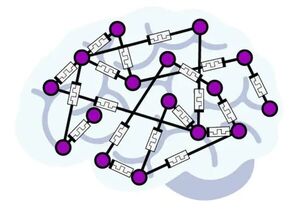
'Edge of chaos' opens pathway to artificial intelligence discoveries
"Nanowire network trained to solve simple problem Some neuroscience theories suggest the human brain operates best 'at the edge of chaos'. Now scientists in Australia and Japan have found that keeping a nanowire network at the edge of becoming chaotic is the best state for it to produce useful results. Scientists at the University of Sydney and Japan’s National Institute for Materials Science (NIMS) have discovered that an artificial network of nanowires can be tuned to respond in a brain-like way when electrically stimulated. The international team, led by Joel Hochstetter with Professor Zdenka Kuncic and Professor Tomonobu Nakayama, found that by keeping the network of nanowires in a brain-like state “at the edge of chaos”, it performed tasks at an optimal level. This, they say, suggests the underlying nature of neural intelligence is physical, and their discovery opens an exciting avenue for the development of artificial intelligence. The study is published today in Nature Communications." [...]

Quantum Random Number Generator Sets Benchmark for Size, Performance
"At Roughly The Size Of A Fingertip, The Integrated Photonics Chip Delivers Random Number Output More Than Twice As Fast As Conventional QRNGS. As pervasive as they are in everyday uses, like encryption and security, randomly generated digital numbers are seldom truly random. So far, only bulky, relatively slow quantum random number generators (QRNGs) can achieve levels of randomness on par with the basic laws of quantum physics, but researchers are looking to make these devices faster and more portable. In Applied Physics Letters, by AIP Publishing, scientists from China present the fastest real-time QRNG to date to make the devices quicker and more portable. The device combines a state-of-the-art photonic integrated chip with optimized real-time postprocessing for extracting randomness from quantum entropy source of vacuum states. “Recently, the technology of integrated quantum photonics has exhibited significant advantages in terms of size reduction,” said author Jun Zhang." [...]
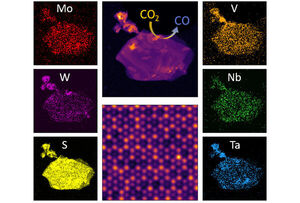
New 2D alloy combines five metals, breaks down CO2
"It’s first demonstrated use of a 2D, multi-metallic alloy A two-dimensional alloy material — made from five metals as opposed to the traditional two — has been developed by a collaboration between researchers at the McKelvey School of Engineering at Washington University in St. Louis and researchers at the College of Engineering at the University of Illinois at Chicago. And, in a first for such a material, it has been shown to act as an excellent catalyst for reducing CO2, into CO, with potential applications in environmental remediation. The research, from the lab of Rohan Mishra, assistant professor in the Department of Mechanical Engineering & Materials Science at Washington University, was published Saturday, June 26, in the journal Advanced Materials. “We’re looking at transforming carbon dioxide, which is a greenhouse gas, into carbon monoxide,” Mishra said. “Carbon monoxide can be combined with hydrogen to make methanol. It could be a way to take CO2 from the air and recycle it back into a hydrocarbon.” The basis of this innovation is a class of materials known as transition metal dichalcogenides (TMDCs) — they include transition metals and a chalcogen, which includes sulfur, selenium and tellurium." [...]

Astrophysicists detect first black hole-neutron star mergers
"Mix pair is ‘elusive missing piece of the family picture of compact object mergers’ A long time ago, in two galaxies about 900 million light-years away, two black holes each gobbled up their neutron star companions, triggering gravitational waves that finally hit Earth in January 2020. Discovered by an international team of astrophysicists including Northwestern University researchers, two events — detected just 10 days apart — mark the first-ever detection of a black hole merging with a neutron star. The findings will enable researchers to draw the first conclusions about the origins of these rare binary systems and how often they merge. “Gravitational waves have allowed us to detect collisions of pairs of black holes and pairs of neutron stars, but the mixed collision of a black hole with a neutron star has been the elusive missing piece of the family picture of compact object mergers,” said Chase Kimball, a Northwestern graduate student who co-authored the study. “Completing this picture is crucial to constraining the host of astrophysical models of compact object formation and binary evolution. Inherent to these models are their predictions of the rates that black holes and neutron stars merge amongst themselves." [...]

A crystal made of electrons
"Researchers at ETH Zurich have succeeded in observing a crystal that consists only of electrons. Such Wigner crystals were already predicted almost ninety years ago but could only now be observed directly in a semiconductor material. Crystals have fascinated people through the ages. Who hasn’t admired the complex patterns of a snowflake at some point, or the perfectly symmetrical surfaces of a rock crystal? The magic doesn’t stop even if one knows that all this results from a simple interplay of attraction and repulsion between atoms and electrons. A team of researchers led by Ataç Imamoğlu, professor at the Institute for Quantum Electronics at ETH Zurich, have now produced a very special crystal." [...]

A Laser Breakthrough
"The first commercially scalable integrated laser and microcomb on a single chip Fifteen years ago, UC Santa Barbara electrical and materials professor John Bowers pioneered a method for integrating a laser onto a silicon wafer. The technology has since been widely deployed in combination with other silicon photonics devices to replace the copper-wire interconnects that formerly linked servers at data centers, dramatically increasing energy efficiency — an important endeavor at a time when data traffic is growing by roughly 25% per year. For several years, the Bowers group has collaborated with the group of Tobias J. Kippenberg at the Swiss Federal Institute of Technology (EPFL), within the Defense Advanced Research Projects Agency (DARPA) Direct On-Chip Digital Optical Synthesizer (DODOS) program. The Kippenberg group discovered “microcombs,” a series of parallel, low-noise, highly stable laser lines. Each of the many lines of the laser comb can carry information, extensively multiplying the amount of data that can be sent by a single laser. Recently, several teams demonstrated very compact combs by placing a semiconductor laser chip and a separate silicon nitride ring-resonator chip very close together." [...]
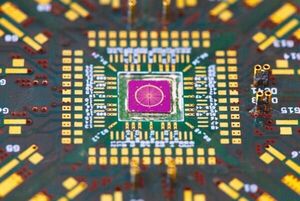
Unfinding a Split Electron
"Scientists advance the understanding of potential topological quantum bits Scientists from the Nanoelectronics group at the Institute of Science and Technology (IST) Austria were looking for half an electron as a basis for a quantum computer. Together with researchers from University of Copenhagen and the Spanish National Research Council (CSIC), they investigated a promising experimental setup just to find that the signals they measured were not telling the truth. They now published their findings in the journal Science. Quantum computers promise great advances in many fields – from cryptography to the simulation of protein folding. Yet, which physical system works best to build the underlying quantum bits is still an open question. Unlike regular bits in your computer, these so-called qubits cannot only take the values 0 and 1, but also mixtures of the two." [...]

Chenfeng Ke's Lab Turns Up the Heat on 3D Printing Inks
"A process that uses heat to change the arrangement of molecular rings on a chemical chain creates 3D-printable gels that can fold, roll, or just hold their shape, according to a Dartmouth study. The researchers describe the new process as "kinetic trapping." Molecular stoppers—or speed bumps—regulate the number of rings going onto a polymer chain and also control ring distributions. When the rings are bunched up, they store kinetic energy that can be released, much like when a compressed spring is let loose. Researchers in the Ke Functional Materials Group use heat to change the distribution of rings and then use moisture to activate different shapes of the printed object. The ability to print objects with different mechanical strengths using a single ink could replace the costly and time-consuming need to use multiple inks to print items with different properties." [...]
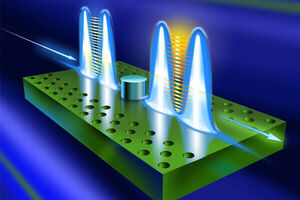
A new piece of the quantum computing puzzle
"An efficient two-bit quantum logic gate has been out of reach, until now Research from the McKelvey School of Engineering at Washington University in St. Louis has found a missing piece in the puzzle of optical quantum computing. Jung-Tsung Shen, associate professor in the Preston M. Green Department of Electrical & Systems Engineering, has developed a deterministic, high-fidelity two-bit quantum logic gate that takes advantage of a new form of light. This new logic gate is orders of magnitude more efficient than the current technology. “In the ideal case, the fidelity can be as high as 97%,” Shen said. His research was published in May 2021 in the journal Physical Review A. The potential of quantum computers is bound to the unusual properties of superposition — the ability of a quantum system to contain many distinct properties, or states, at the same time — and entanglement — two particles acting as if they are correlated in a non-classical manner, despite being physically removed from each other." [...]
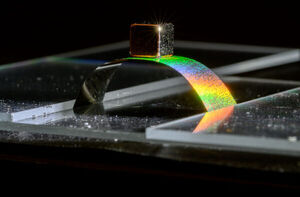
Growing ‘Metallic Wood’ to New Heights
"Natural wood remains a ubiquitous building material because of its high strength-to-density ratio; trees are strong enough to grow hundreds of feet tall but remain light enough to float down a river after being logged. For the past three years, engineers at the University of Pennsylvania’s School of Engineering and Applied Science have been developing a type of material they’ve dubbed “metallic wood.” Their material gets its useful properties and name from a key structural feature of its natural counterpart: porosity. As a lattice of nanoscale nickel struts, metallic wood is full of regularly spaced cell-sized pores that radically decrease its density without sacrificing the material’s strength. The precise spacing of these gaps not only gives metallic wood the strength of titanium at a fraction of the weight, but unique optical properties. Because the spaces between gaps are the same size as the wavelengths of visible light, the light reflecting off of metallic wood interferes to enhance specific colors. The enhanced color changes are based on the angle that light reflects off of the surface, giving it a dazzling appearance and the potential to be used as a sensor." [...]
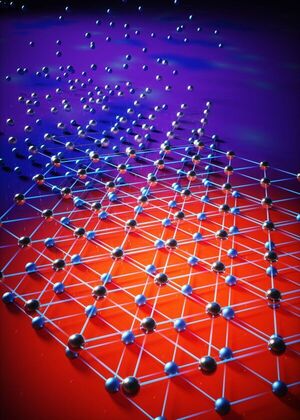
Harvard-led researchers document quantum melting of Wigner crystals
"Study marks major step to creating a system to study quantum phase transitions In 1934, physicist Eugene Wigner made a theoretical prediction based on quantum mechanics that for decades years went unseen. The theory suggested how a metal that normally conducts electricity could turn into a nonconducting insulator when the density of electrons is reduced. Wigner theorized that when electrons in metals are brought to ultracold temperatures, these electrons would be frozen in their tracks and form a rigid, non-electricity conducting structure — a crystal — instead of zipping around at thousands of kilometers per second and creating an electric current. Since he discovered it, the structure was coined a Wigner crystal and was observed for the first time in 1979. What’s remained stubbornly elusive to physicists, however, has been the melting of the crystal state into a liquid in response to quantum fluctuations. At least, it was: Now, almost 90 years later, a team of physicists co-led by Hongkun Park and Eugene Demler in the Faculty of Arts and Sciences has finally experimentally documented this transition." [...]
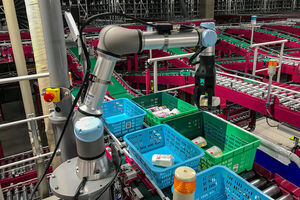
Giving robots better moves
"MIT alumnus-founded RightHand Robotics has developed picking robots that are more reliable and adaptable in warehouse environments. For most people, the task of identifying an object, picking it up, and placing it somewhere else is trivial. For robots, it requires the latest in machine intelligence and robotic manipulation. That’s what MIT spinoff RightHand Robotics has incorporated into its robotic piece-picking systems, which combine unique gripper designs with artificial intelligence and machine vision to help companies sort products and get orders out the door. “If you buy something at the store, you push the cart down the aisle and pick it yourself. When you order online, there is an equivalent operation inside a fulfillment center,” says RightHand Robotics co-founder Lael Odhner ’04, SM ’06, PhD ’09." [...]
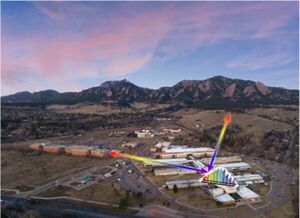
NIST Laser ‘Comb’ Systems Now Measure All Primary Greenhouse Gases in the Air
"Researchers at the National Institute of Standards and Technology (NIST) have upgraded their laser frequency-comb instrument to simultaneously measure three airborne greenhouse gases — nitrous oxide, carbon dioxide and water vapor — plus the major air pollutants ozone and carbon monoxide. Combined with an earlier version of the system that measures methane, NIST’s dual comb technology can now sense all four primary greenhouse gases, which could help in understanding and monitoring emissions of these heat-trapping gases implicated in climate change. The newest comb system can also help assess urban air quality. These NIST instruments identify gas signatures by precisely measuring the amounts of light absorbed at each color in the broad laser spectrum as specially prepared beams trace a path through the air. Current applications include detecting leaks from oil and gas installations as well as measuring emissions from livestock. The comb systems can measure a larger number of gases than conventional sensors that sample air at specific locations can." [...]

Proton's Travel Route in Polymers Could Lead the Way to Clean Fuels
"Researchers explore proton transport in thin film polymers containing various concentrations of an organic acid group found in biomaterials Proton transfer is an essential process for energy conversion in biological systems, but the transfer mechanism is little understood. Now, in a new study, a team of researchers from Japan has investigated the nature of proton transport for various concentrations of a proton-donating group in thin film polymers mimicking a biomaterial, providing important insights about the transport pathways and opening doors to biological technology involving proton conduction and eco-friendly fuel cells. Protons--subatomic particles with a positive electric charge--are one of the first particles to have formed after the universe began and are a constituent of every atom today out there. The movement of protons plays a key role in energy conversion processes, such as photosynthesis and respiration, in biological systems. In addition, proton conduction is an important factor for hydrogen fuel cells, which are often touted as the ideal clean energy source for the next generation. High proton conduction observed in biomaterials such as sugar and protein derivatives is attributed to the presence of proton-donating functional groups (substituents in a molecule that governs its characteristic chemical reactions)." [...]

Stopping the sulfur shuttle for better batteries
"A layer of hierarchically three-dimensional porous graphene greatly suppresses a problem holding back the development of lithium-sulfur batteries. As our society and transportation systems become increasingly electrified, scientists worldwide are seeking more efficient and higher capacity storage systems. Researchers at KAUST have made an important contribution by modifying lithium-sulfur (Li-S) batteries to suppress a problem known as polysulfide shuttling. “The bottleneck in the utilization of renewable energy, especially in transportation, is the need for high-density batteries,” says Eman Alhajji, Ph.D. student and first author of the research paper. Li-S batteries have several potential advantages over the most commonly used types of batteries. They have a higher theoretical energy storage capacity and sulfur is a nontoxic element readily available in nature." [...]

The odd couple: a groundbreaking new discovery from gravitational whispers
"Two gravitational wave signals from an entirely new class of cosmic collisions have been discovered by researchers working on the Advanced LIGO and Advanced Virgo detectors. Each of the signals came from the merger of a black hole with a neutron star. The first signal was first detected on January 5 2020. Astoundingly, just 10 days later, the gravitational waves from a second neutron star-black hole binary merger were observed. A paper describing the findings is published today (June 29) in The Astrophysical Journal Letters. Previously, Advanced LIGO and Virgo had observed more than 50 signals from the merger of pairs of black holes and pairs of neutron stars, but never before from a mixed pair." [...]

USTC Realizes On-chip Valley-dependent Quantum Interference
"The research team led by academician GUO Guangcan from University of Science and Technology of China (USTC) of the Chinese Academy of Sciences, collaborating with the researchers from Sun Yat-sen University and Zhejiang University, realized two-photon quantum interference in the structure of valley-dependent topological insulators based on the valley Hall effect. The study was published in Physical Rdepeview Letters. Topological photonics has an application prospect in the research field of photonic chips due to robust energy transport prosperities. The key to topological phase transition is to generate an energy gap at certain degenerate points by breaking either the time-reversal symmetry (TRS) or inversion symmetry. By breaking the spatial inversion symmetry of the system, the valley-dependent helical edge states travel in certain directions, known as Valley-Hall effect. Hexagonal lattice photonic crystals (PCs) with inequivalent sublattices can realize the valley-dependent topological insulators." [...]

Quantum simulation: Measurement of entanglement made easier
"Researchers led by Peter Zoller have developed a method to make previously hardly accessible properties in quantum systems measurable. The new method for determining the quantum state in quantum simulators reduces the number of necessary measurements and makes work with quantum simulators much more efficient. In a few years, a new generation of quantum simulators could provide insights that would not be possible using simulations on conventional supercomputers. Quantum simulators are capable of processing a great amount of information since they quantum mechanically superimpose an enormously large number of bit states. For this reason, however, it also proves difficult to read this information out of the quantum simulator. In order to be able to reconstruct the quantum state, a very large number of individual measurements are necessary." [...]

Future data storage units could be just two atoms thick
"Researchers from Tel Aviv University have engineered what has been described as the “world’s tiniest technology”, opening up the possibility of storing information in the thinnest devices ever seen using “slidetronics”. The unit is just two atoms thick; it is made up of ‘sliding’ 2D layers of boron and nitrogen, through which electrons may tunnel, boosting the information reading process beyond current technologies. Current state-of-the-art nano storage devices are at least 100 atoms thick, containing around a million atoms in a crystalline structure. Approximately a million of these devices could fit into the area of a coin, each switching at a speed of a million times per second. “Our research stems from curiosity about the behaviour of atoms and electrics in solid materials, which has generated many of the technologies supporting our modern way of life,” said Professor Moshe Ben Shalom. “We, and many other scientists, try to understand, predict, and even control the fascinating properties of these particles as they condense into an ordered structure that we call a crystal." [...]
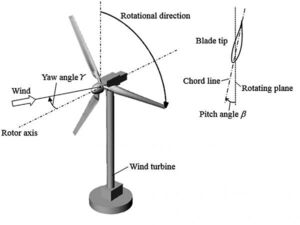
Steering Wind Turbines Creates Greater Energy Potential
"As wind passes through a turbine, it creates a wake that decreases the downstream average wind velocity. The faster the spin of the turbine blades relative to the wind speed, the greater the impact on the downstream wake profile. For wind farms, it is important to control upstream turbines in an efficient manner so downstream turbines are not adversely affected by upstream wake effects. In the Journal of Renewable and Sustainable Energy, by AIP Publishing, researchers from the University of Illinois at Urbana-Champaign show that by designing controllers based on viewing the wind farm system as a coupled network, it is possible to extract power more efficiently. “If you think of a wind farm as a group of turbines each vying for the incoming wind, if every turbine is greedy and tries to maximize its own power, the system as a whole is suboptimal,” said author Lucas Buccafusca. “Our work seeks to design controls for turbines to work collectively, thereby improving performance.” The researchers apply a model predictive control (MPC) framework for varying wind velocities and incorporate wake steering techniques to demonstrate there can be a potential benefit to incorporating these methods into future wind turbine control algorithms." [...]

Rare Superconductor Discovered – May Be Critical for the Future of Quantum Computing
"Research led by Kent and the STFC Rutherford Appleton Laboratory has resulted in the discovery of a new rare topological superconductor, LaPt3P. This discovery may be of huge importance to the future operations of quantum computers. Superconductors are vital materials able to conduct electricity without any resistance when cooled below a certain temperature, making them highly desirable in a society needing to reduce its energy consumption. They manifest quantum properties on the scale of everyday objects, making them highly attractive candidates for building computers that use quantum physics to store data and perform computing operations, and can vastly outperform even the best supercomputers in certain tasks. As a result, there is an increasing demand from leading tech companies like Google, IBM and Microsoft to make quantum computers on an industrial scale using superconductors. However, the elementary units of quantum computers (qubits) are extremely sensitive and lose their quantum properties due to electromagnetic fields, heat, and collisions with air molecules." [...]
Projetos Maker
Diversos Projetos interessantes.
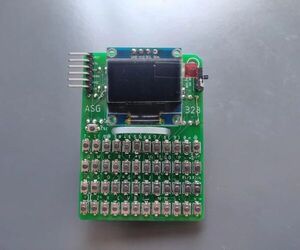
Tiny Handheld BASIC Computer
"This tiny project is a smaller version of another project I made roughly six months ago. The other project was fun, but I had a couple of hardware and user issues that bugged me. Besides the bugs from the previous version, I also wanted to make it a lot smaller, since the previous version was a bit clunky. This project has a width of 47mm and a height of 65mm. I am very pleased with the size of the PCB, but the depth of the board is 28mm due to a silly choice in components. Even though I wanted to fix some bugs with the old project, this project also has a lot more bugs as well and is probably a bad idea to build." [...]
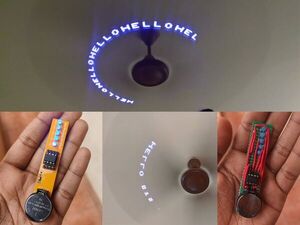
Make a PoV Display with ATtiny13 for $1
"Learn how to build a really cool persistence of vision display for $1. Story PoV Display with ATtiny13 for $1 I was browsing through AliExpress sometime back and this particular listing caught my attention. 5 Pcs of ATtiny13 microcontrollers for ₹124, that's like $1.5. That's like $0.3 (₹25) per MCU. Isn't that amazing, a programmable microcontroller! for ₹25." [...]

Arduboy on ATMega4809
"Porting Arduboy to the ATMega4809 and making it run on a Arduino Nano Every. Story After learning about the Arduboy challenge, we (team Karooza) decided to join in the fun and port Arduboy to a new microcontroller. In the spirit of staying with true 8 bit gaming we chose the ATMega4809. This relatively new microcontroller is also used in the Arduino Nano Every, making it available to the average maker. For this very reason we also chose the Nano Every as our initial target. Then we designed a PCB which handles battery charging, boosting to 5V and breaking out the buttons, LEDs and piezo speaker." [...]

Building DIY Split-Flap Displays
"It’s incredible how far display technology has come. Nowadays LED walls are found at every major concert venue, flat panel televisions are ubiquitous, and everyone has a high resolution, full color LCD display in their pocket. It’s difficult to imagine that just a few short decades ago it was a struggle to create a large, dynamic display for an economical price. One such solution to that problem was “split-flap” displays. This technology was commonly used in train stations, bus terminals, and airports for arrival and departure boards – places where information is needed at a glance, clearly visible at all times of day, and easily updatable when schedules change. On a smaller scale it also made its way into consumer alarm clocks, one of which is immortalized in the film Groundhog Day (1993)." [...]

SMART Response XE Tiny Basic Port
"My love of retro computing has sent me on the journey to have a small handheld device that runs a BASIC interpreter. I was so happy to run across the SMART Response XE! This was a popular classroom device that allowed teachers to setup lessons, quizzes, whatever into a program and then the students would use these devices to interact with the curriculum. The advent of wide spread cell phone use has made these devices obsolete. However, they are rugged, excellent on battery life, and best of all, COMES WITH AN ARDUINO PROCESSOR!!! Yes, this humble device includes the Atmel ATmega128RFA1 processor with 128k RAM, 4k EEPROM, and external 1Mbit memory chip." [...]

Arduino Based Counting Tree for Children
"Counting can be a fun task for young children. Children as young as two may start saying numbers in no particular order. A lot of parents start teaching their kids numbers by counting objects around their home. For example, snacks could be counted as the child eats them or toy cars on the floor could be counted as there are put away for the day. Eventually children will learn to equate the number symbol (1 10) with the number of objects that are counted. In this project, it will be the number of green lights that light up." [...]
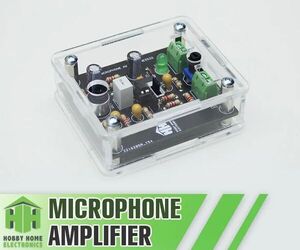
Microphone Amplifier NE5532
"Good afternoon, dear viewers and readers. In todays article, I will show you the universal microphone amplifier based on the microcircuit NE5532. The microphone amplifier schematic diagram and printed circuit board (PCB) were developed in Easy EDA online environment. The microphone amplifier can work with two or three output electret microphones. Good sound quality is achieved through the use of radio components such as tantalum capacitors and the low noise operational amplifier microcircuit NE5532. The circuit contains two stages with controlled gain." [...]
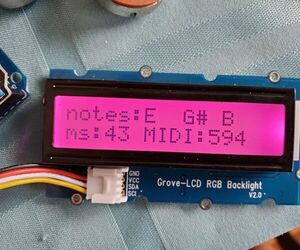
Basic Arduino MIDI Arppegiator
"In this instructable I will show you how to make a basic MIDI instrument using an Arduino Uno. This instrument plays three notes (a triad) in a row. Using the different potentiometers, you can move up and down the notes as well as up and down a scale. You can also control the delay between each note. I feel like I learned a some interesting things about MIDI controllers from this project and I hope you will too. This instrument is a really basic version of an arpeggiator." [...]
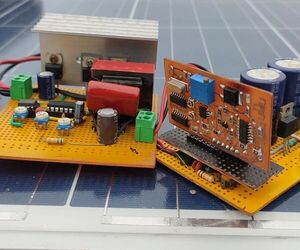
200W Modified Square Wave Inverter With Crystal Control
"Hello everyone! Thank you for stopping by this tutorial on how to build a modified square wave inverter that is capable of delivering 200Watts of power. This inverter delivers a modified square wave AC signal of exactly 50 Hz. This is possible by using a crystal oscillator which helps us to get super accurate frequencies. Other features of this inverter include: Waveform shape control and dead time adjustment Low Voltage cutoff Precise frequency operation without using microcontroller. The best thing about this design is that it is free from microcontrollers and complex programming and uses traditionally available PWM control chips, counters, frequency dividers and some smart combination of these classic ICs." [...]
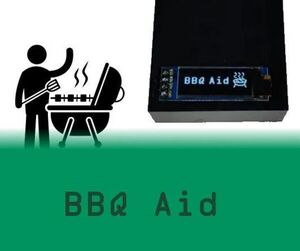
BBQ Aid
"Many people can't tell the difference between barbeque and grilling. Heck, we almost always made a fire that put some blacksmiths to shame, just to grill those pork chops under 3 nanoseconds! (no, really, we used an industrial air compressor to fan the fire up until all the coal was red and no one could get near the grill, literally) I was introduced to proper BBQ just a few years ago, and fell in love with low and slow. It's now a sunny saturday task to ignite the fire, grill a round of chevap to keep people from starving, and after that, BBQ some pork spare ribs or collar for 6-8 hours, about 120C (250F). Of course, it wasn't THAT good on the first and second try, and it failed because of the temperature. It went occasionally too high." [...]
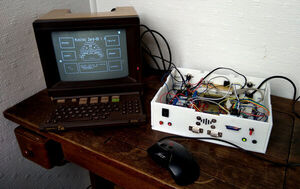
ZARDOS - MINITEL
"ZARDOS or, "Ze ARDuino Operating System", is a modest operating system project dedicated to Arduino compatible microcontrollers and using a Minitel terminal such as Human Machine Interface. The goal of this project is to create a real operating system, primitive but functional, which can evolve over time and possibly be enriched by external contributors. On this deliberately minimalist site, you will find Arduino libraries & programs which will also allow you to run ZARDOS on your Minitel. The basic principle is simple: The Arduino communicates with the Minitel via the serial link of the peri-computer cable. In one direction it retrieves information from the keyboard, and in the other it sends its configuration commands and screen display. All made possible thanks to the brilliant library written by Eric Serandour The basic program runs on an Arduino MEGA, but it is possible to run a minimum version on UNO." [...]
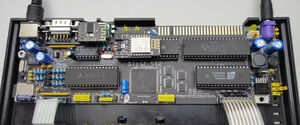
ZX Spectrum CPLD-based clone for rubber case
"Another CPLD-based ZX Spectrum clone for 48K rubber case with some sweet features. Tech specs - Half-sized PCB for 48K rubber case, case modifications isn't necessary - Pentagon, Spectrum 128K and Spectrum 48K timings - Altera EPM1270 CPLD - Real Z80 in 3.5MHz, 7MHz (no-wait turbo) and 14MHz (turbo with wait-states) modes - Switchable 128K / +3e-divmmc ROM - 512K RAM - Real AY-8910 with switchable stereo ABC/ACB/mono output - Sega 6-button joystick input; Kempston/Sinclair modes - Integrated DivMMC, 1x microSD socket - PAL and RGB video out (Sega Mini-DIN/9 connector) - Digital video out for EGA monitors - ULAplus - Mono covox (Pentagon standard) - SounDrive (4-channel stereo covox) - WiFi addon (link) - Tape input via 3.5" jack and Bluetooth - 9-12V power supply with any polarity - Reset and Magic buttons; header for power button With extension board (link) more features may be added: - Turbo Sound FM - General Sound (12MHz / 512Kb RAM) - SAA1099 - MIDI sound" [...]
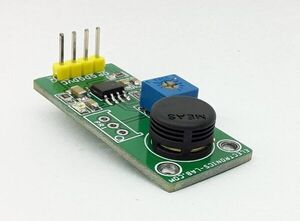
Humidity Sensor – Humidity to Frequency Output
"This sensor board provides frequency output as per relative humidity value. The project is based on a unique capacitive cell, this relative humidity sensor is designed for high volume, cost-sensitive applications such as office automation, automotive cabin air control, home appliances, and industrial process control systems. It is also useful in all applications where humidity compensation is needed. The circuit is built using a low-cost NE555 timer as an astable generator, humidity sensor MK1 acts as a variable capacitor and is connected to the TRIG and THRES pin. Pin 7 is used as a short circuit pin for resistor R3. The HS1101LF equivalent capacitor is charged through R2, R3, and PR1 is set the threshold voltage (approximately 0.67Vcc) and discharged through R2 only to the trigger level (approximately 0.33Vcc) since R3 is shortened to the ground by pin 7." [...]

Floating and Spinning Earth Globe
"The objectives of this project were (1) to make an object float, by means of magnetic levitation and controlled by an Arduino Nano and (2) documenting the whole process allowing other people to build one on their own. There were some requirements, too. First, I wanted an object of a certain size and weight, floating in a very stable way (no jitter, no oscillations,...). Additionally, safety was a concern (the main magnet has a 24 Volt and 25 Watts rating, producing quite some heat). And last but not least: the end result had to be 'nice', earning its place in my living room ! I finally came up with an 11 cm (4.3") magnetically levitated earth globe, not only floating but rotating at a fixed pace as well, illuminated by two digitally controlled led strips and nicely fitted inside a wooden lantern." [...]

Capturing Camera Images with CircuitPython
"CircuitPython 7 adds support for capturing images from "parallel cameras" on select boards, and libraries are available to configure the popular OV7670 and OV2640 cameras. While not up to standards we’re used to from a current smartphone or laptop, it’s nicely balanced to the capabilities of recent 32-bit microcontrollers. The Arduino library for OV7670 cameras on the Grand Central M4 has its own dedicated guide. Parts Items needed - Compatible microcontroller board: any ESP32-S2 including Kaluga supported by CircuitPython with enough pins exposed, any RP2040 supported by CircuitPython including Pico and other boards with enough pins, or Grand Central M4 - SPI TFT module - OV7670 or OV2640 camera module — the board pinout must match exactly - Two 2.2k resistors, if pull-up resistors are necessary - Soldering iron and supplies - Appropriate USB data + power cable - Prototyping supplies such as breadboards and jumper wires The Espressif Kaluga v1.3 development kit has all you need (including an OV2640 camera module and 320x240 LCD), and no soldering is required, so it's probably the best way to get started! Be aware that you must use the USB Breakout Cable with this board. OV7670 and OV2640 camera modules with the 18 pin, 2-row header can be found on Amazon, eBay, etc." [...]

Remote Object Detection with Google Coral and Sixfab CORE
"Object detection remotely and easily with Sixfab CORE and Google Coral. Today, we will build a project on simple object detection via the remote terminal developed by Sixfab, using Google Coral, which I included in my project. Here is a project for a real-world solution that connects artificial intelligence, remotely assisted IoT deployment and cloud connectivity. Google Coral is an edge AI hardware and software platform for intelligent edge devices with fast neural network inferencing. Coral is Google’s initiative for pushing into Edge AI, with machine learning devices that run without a connection to the cloud. With Coral, you can quickly perform machine learning operations on end devices." [...]

Sphero RVR Low Latency Teleoperation Using Raspberry Pi
"Control your Sphero RVR over the internet from anywhere in the world in near-real-time. No coding required! In this guide, we’ll be showing you how to connect Sphero RVR to the internet and control it remotely using Surrogate.tv. With this setup, you can drive your RVR from anywhere in the world, and even let others control it with you. Best of all, if your Raspberry Pi is already set up with Surrogate.tv SDK, you’ll be up and running in just 10 minutes. Prefer watching a video?" [...]

Double clap LED Lamp
"Turn on an LED strip with 2 claps using a sound sensor Did you ever dream about turning lights on and off by clapping your hands? If so, this project is for you! This project uses a sound sensor to control a NeoPixel LED strip. The lamp plugs into a power outlet and can be turned on/off via 2 consecutive claps or knocks. A craft wire was used to shape the lamp while a small cardboard box hides the components. " [...]
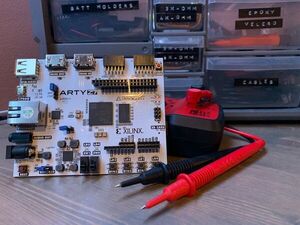
Getting Started with the Arty Z7 in Vivado 2020.2
"See how to build a base hardware image for the Arty Z7 FPGA development board in Vivado 2020.2 Story In this project, I will walk through the steps of setting up a basic hardware design in Vivado for the Arty Z7 FPGA development board from Digilent in Vivado version 2020.2. This hardware design is the starting point for my PetaLinux 2020.2 tutorial found here. Install Board Definition Files Since the FPGA on the Arty Z7 has a certain set of hardware that it is always connected to on the development board, Digilent (as well as many other companies that design/sell Xilinx-based FPGA development boards) provides board preset files for those static configurations that users can install in their Vivado installation. This allows users to not have to spend time configuring that part of the hardware design, and jump straight to the custom part of their design. " [...]
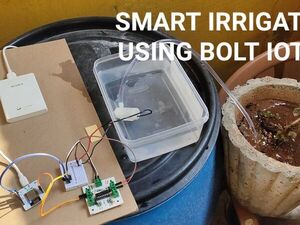
Smart Irrigation using Bolt IoT
"Based on agriculture farm temperature conditions the motor pump will run and pump water to plants Due to the Sun temperature now-a-days, the farm lands and trees are damaging for not getting water on time. Every farmer needs to check all the conditions at farm. So why can't we solve this problem using our Bolt IoT? " [...]
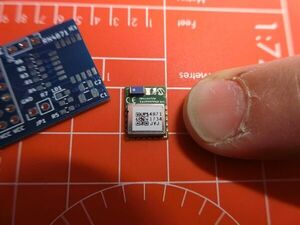
Pmod BLE
"Another Pmod based on RN4871 BLE module (just like Digilent Pmod BLE). Almost an exact copy of Digilent's Pmod BLE but this design includes the signal names on bottom in case you want to use Dupont cables instead of the standard Pmod female socket. So no more checking the schematics or other documentation to get the pinout. We had some samples of the RN4871 and PCB coupons from JLCPCB and decided to create a Pmod. " [...]

Arduboy Pocket Watch!
"Ever wanted a pocket watch that you can play one click games on? Well then this is the project you were looking for! The first time I saw an Arduboy I immediately knew that I needed one, I also know that I love making stuff so I thought why not make my own special version of it! Idea So I knew I wanted to build one myself I just needed to figure out how to make it unique and in a way no one has made it before. I also needed it to be simple enough for people to build their own from this tutorial, useful enough for people to want to make their own and innovative enough to wow the judges of the contest xD. Then it hit me, the best way to want more people to have an arduboy is to make it tell time as well." [...]
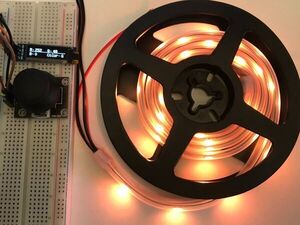
LED strip color mixer with OLED display
"Create a simple color mixer which can display up to 16 million colors! This is a tutorial on how to create my version of a color mixer. A joystick is the main form of control in this project. It controls the strip's RGB values, which determine the intensity of color of the LEDs on the strip. An OLED displays these values. You can optionally include buttons of your own and code them to display certain patterns (you can find some neat patterns in the NeoPixel library examples folder)." [...]

DIY Arduboy GT
"Homemade Arduboy using custom PCB, modules and all through hole parts that stands out. 1.54" OLED display, silent buttons and RTC FTW For the Arduboy contest I took the opportunity to design a custom PCB for a homemade Arduboy that uses only through hole parts and easy to obtain modules. In addition to that I wanted to make it stand out from other Homemade Arduboys by using some other then usual parts.It uses a Teensy 2.0 as core, a 1.54" OLED display, 2 x RGB LEDs, a 16MB flash chip for games, a Real Time Clock and has support for two kind of buttons. Below an image that shows all the parts used. As core board a Teensy 2.0 is used. Because it has all the GPIO pins broken out that are used by official Arduboy." [...]
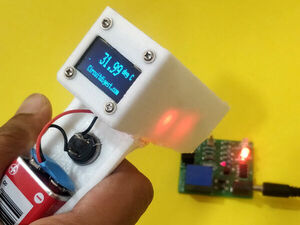
Make a Non-Contact Infrared Thermometer with MLX90614 IR Temperature Sensor
"When debugging an electronics circuit or testing a new hardware design, often times I tend to check if the components on the board are getting hot abnormally by touching them. And if something is messed up (which usually is in the first try) these components could get as hot as 80°C or more burning not only the component but also my finger along with it. After burning my fingers for more times than I could remember I decided to build my own Temperature Gun using Arduino and an Infrared Temperature Sensor. This Thermal gun will be built using a non-contact temperature sensor called MLX90614; hence it can not only be used to measure component temperatures but can also be used for measuring body temperature, surface temperature, Heat ventilation and much more. Of course, these thermal guns are readily available in the market from renowned manufacturers like Fluke, Flir etc. But they are not light on your pockets and on top of that what is more fun than building your own gadgets." [...]
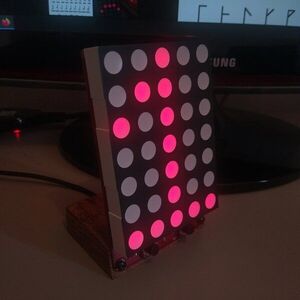
MonKlock
"Cistercian Monk's cypher digital clock. The Cistercians, a Monk order from the 13th century, created a number cypher that was able to map from 0 to 9999 using a single digit. This clock uses a 5x7 LED display to represent the Cistercian numbers to show the time using either the hh:mm format (00:00 to 23:59) or decimal time (0000 to 9999 intervals, work in progress). The clock is also capable of representing the current day and month using a distinct pattern of dots on the matrix. The Cistercian numeral system, a numeral system that was used by the Cistercian order of monks in the 13th to 15th centuries of the Middle Ages, and has been used sporadically since then. It allowed writing numbers from 1 to 9999 as single compound characters." [...]
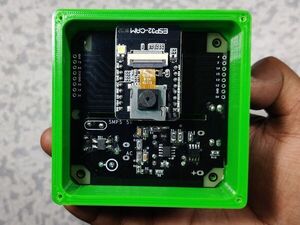
DIY Security CAM
"A DIY Security Cam made from ESP32 and powered directly by AC240V (there's a charger circuit in it which converts 240VAC to 5VDC for esp32) This is my DIY Security Cam which is made from an ESP32 connected with a 5V Charger circuit that converts 240V AC into 5V DC for ESP32 to run. The goal for making this project was to make a cheaper alternative to the existing WIFI Security Camera. Also, huge thanks to PCBWay for Supporting this project, Check out PCBWay for getting great PCB Service at a relatively less cost. Material Required These are the things that I've used in this project- - ESP32 CAM - Custom PCB (which was provided by PCBWay) - 3D Printed Enclosure - Charger Circuit (BOM is attached) - Isolated 5V 1A SMPS Module" [...]
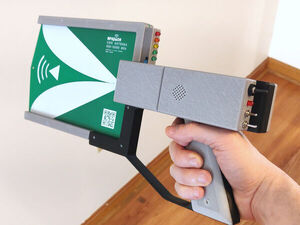
RF Listener
"So what is this thing? Basically it's a handheld device that allows you to "hear" RF sources. Regular rf receivers single out a particular frequency and decode it into some type of information. This device on the other hand picks up everything, and plays it as audio without any decoding. When you turn it on you immediately hear a whole forest of sounds; rapid blips from wifi, the intermittent chirps of airport radar, the drone of a microwave oven, and so on. It's like gaining access to a whole world of sound that ordinarily cannot be heard." [...]

Birthday Cake Automated Xylophone
"Live music playing birthday cake with special light effects. Introduction The purpose of this project was to create a personal birthday gift. And while doing so have some fun with electronics, software and 3D printing! The strawberry & whipped cream cake has 4 operation modes, set by rotating the strawberry encoder. The default mode only has led-effects and no sound. Then you have the birthday mode, in which the cake plays happy birthday until you never want to celebrate a birthday again." [...]

12V Uninterruptible Power Supply
"A simple and fully automatic, 12V uninterruptible power supply system for small/medium power appliances. Motivation This is a simple and fully automatic, 12V uninterruptible power supply system for small/medium power appliances. This power supply specifically designs to drive routes and modems to provide uninterrupted internet and telephone services in areas affected by frequent power failures. Introduction This 12V uninterruptible power supply initially designs to drive my fiber optic modem/router. The key reason to build this power supply is to get continuous internet and phone connection during power failures. Core components of this power supply are a constant voltage charger, 12V DC power supply, AC line monitoring unit, and 12V high capacity sealed lead-acid battery." [...]

RFID Based Door Lock System Using Arduino Uno
"Here I'll explain to you How to make RFID based door lock system using Arduino in a simple way. Hello, friends in this post I'll show you How to make RFID based door lock system using Arduino UnoRC522 RFID module in a simple way. To make this project I used Arduino Uno as a microcontroller. I have 2 RFID cards & 1 RFID tag/Keychain. The LCD display is used to show instructions to the user. I used a 12V solenoid lock to unlock the door." [...]

Node MCU RC Car (Mobile/Phone Cotrolled)
"An Node MCU(ESP8266) car which can be controlled by Mobile/Phone and can be made very easily. This project also shows to confi. it This is a Blog related to making a Node MCU Car which can be controlled by Phone/Mobile. So, you will need certain materials to make it, which you can order from online stores and also get from nearby electronic shops. And Do not forget to visit our YouTube page and also Follow us on Instructables and also on Arduino.cc You will need these items (To Buy items click on the item name)- - Node MCU Module (ESP8266)×1 - L298N Motor Driver×1 - TT / Dual Shaft Motors and Wheels×2 - 9 Volt Battery (I used Rechargeable)×1 - Jumper Wires×1" [...]
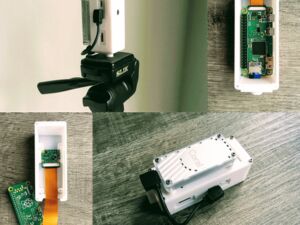
Maple Syrup Pi Camera
"Low power('ish) AIoT smart camera (3D printed) based on the Raspberry Pi Zero W and Google Coral EdgeTPU https://github.com/ricardodeazambuja/Maple-Syrup-Pi-Camera People ask me the reason I chose to use the Raspberry Pi Zero for this project considering it's not a powerful single-board computer. I could have tried ready-made smart cameras, but the Raspberry Pi is one of the best selling general purpose computers ever (beating the Commodore 64, numbers from 4 years ago! ), therefore it has a huge community. This makes life much easier when you need to find a driver or how to solve a problem. In addition to that, last year I released my work on a flexible, collision resilient, quadcopter that has as its brain... a Raspberry Pi Zero W! So, I'm quite familiar working with the Zero and I hope the Raspberry Pi Foundation will soon come up with an upgrade (maybe adding a RP2040 to the RPI Zero PCB?)." [...]

Basement Monitoring Using Wio Terminal and Blynk
"Monitoring basement to make sure humidity does not rise too high and alert to check if dehumidifier bucket is full. Motivation I live in East Coast of USA where most of the houses have basements, some are finished, some are not. Our basement is semi-finished which means proper dehumidification is not setup. In non-finished basements we need to make sure humidity does not rise too much for a long period of time which helps molds to grow. Toxic mold can irritate your eyes, your respiratory system and cause very unpleasant odors in your basement. Mold can trigger asthma attacks and cause serious problems for individuals who have weakened immune systems." [...]
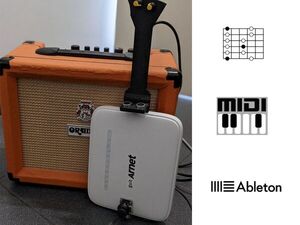
Modem Turned Into a MIDI Guitar Sort of: GuitArnet
"GuitArnet is an Arduino-based simple MIDI guitar with pitch, power chords and minor pentatonic connected to Ableton Live through MIDI. I’ve canceled my Internet service and the local company, named Arnet, left a cable modem router behind. I’ve thought about the trash but then I’ve decided to create a small MIDI instrument just because I was able to add “GUIT” to the Internet provider printed in the case and form GuitARNET. Yes. Really. All the electronics were removed and I’ve added an Arduino Nano connected to a distance sensor, a joystick, 2 potentiometers and 2 Leds." [...]

Using The Things Network with ATOM Lite and LoRaWAN Unit
"Learn how to send messages to The Things Network with MicroPython. You will need a The Things Network Gateway near you. First, make sure that there is a The Things Network gateway near you. You can find out with the world map on https://www.thethingsnetwork.org. If there is no gateway near, you can setup your own. Instructions for adding gateways can be found here https://www.thethingsindustries.com/docs/gateways/adding-gateways." [...]

DIY reflow plate
"I’m preparing a video where I show you how to make the PCB design and order the panel version for your board and then solder all components at once. In that way you can save time and finish your product faster so they will be ready for sale. To do that I need a reflow hot plate and that’s what we will build today using a second-hand clothes iron. We need to measure the temperature, show the power and that temperature on a screen so the user could see the values, we need to control power and in this case a lot of power because my iron is of 3000W, and then we need to have some sort of menu or control in order to select the settings. Let me show you what parts we need, the connections I will do, how to measure and control the temperature at high power and also show you the code. Finally, let’s see if this homemade reflow hot plate will work and if I can reach the desired temperature curve, so what do you think, will it work?" [...]
Secção Videos
Videos interessantes.
That's all Folks!



